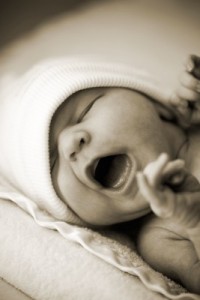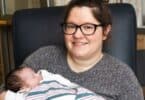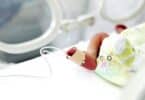
“Having a home birth may be like not putting your child’s car seat belt on,” researchers Dr. Lachlan de Crespigny and Oxford University ethics professor Julian Savulescu wrote in the Journal of Medical Ethics on Wednesday. “Most children will be unharmed. Some trips are very safe. And wearing a seat belt will not remove all risk of injury or death…But on balance, it is much safer with a seat belt.”
The researchers say that their biggest concern is the fact that there are very few resources to quickly detect and deal with complications that may arise during a home birth. They say that this can put the well-being of both mother and baby at risk.
Previous studies would suggest that they may be correct. In fact, one particular study published in the American Journal of Obstetrics and Gynecology indicated that babies born at home are 10 times more likely to be born stillborn than those born in hospitals. Another study also suggested that babies born at home were four times more likely to suffer from neonatal seizures or suffer severe neurological dysfunction.
The researchers say they’re also concerned that few doctors and midwives point out the potential dangers involved in home births, and there’s very little in medical literature when it comes to the long-term risk of disability of children born at home. These concerns led them to suggest that doctors not support home births when there are “safe and compassionate hospital-based alternatives.”
There are, in fact, smaller, less hospital-like environments in which women can give birth. Some locations even pride themselves on their home-like environments. There’s access to more medical equipment and staff, so it could be perceived as ‘safer.’ However, there are some points that the researchers failed to point out in their blanket concern over home births.
The CDC points out that home births are most common among women over the age of 35, which honestly could have something to do with the increase of home birth complications. And one expert challenged the results of the stillbirth study, saying that there were ‘holes’ in the information that made it somewhat unreliable.
The researchers who had conducted the stillbirth study used birth certificate information to create their analysis. This creates a problem for two reasons. First, birth certificates only provide so much information on the how or why a child didn’t survive birth. Secondly, it doesn’t take into consideration that not all home births are planned.
“If you make the assumption that any birth happened at home was planned, you lump in all the unplanned home births and the ones that happened on the side of the road,” she said. “We know that births without a skilled attendant present have worse outcomes,” Wendy Gordon, a member of the Midwife Alliance of North America’s research committee had said in response to the study.
At the end of the day, parents have to make the decision they feel is best for them. Many have found that ‘best’ decision to be a home birth. Others find it to be a hospital. No matter what you decide, we encourage you to do the research for yourself. Make an informed decision. Talk with your doctor or midwife and look at your birth from every possible angle. Play out those worst case scenarios and know what your options will be in both settings.
Honestly, it’s good practice because, as a parent, there will always be those kinds of decisions to make…Is your sick child able to fight off whatever is wrong on his own or do you need a doctor’s help? Do you go to the emergency room overnight or wait for the doctor in the morning? Only you can really make that decision, and you have to trust that YOU are doing what is best for your child.
Related Articles:
- Baby Frozen at Birth To Save her Life, Now a Healthy Toddler
- UK Mom Gives Birth In Shopping Center!
- Jury Awards $32.8M to Family in Childbirth Malpractice Suit







This study became publicized just after another study showed that homebirth is safe.
See:
http://onlinelibrary.wiley.com/doi/10.1111/jmwh.12172/abstract